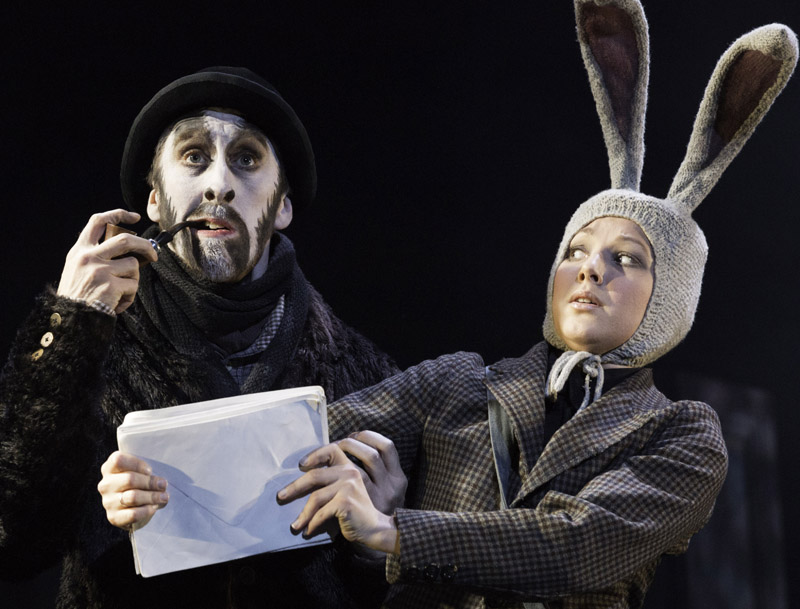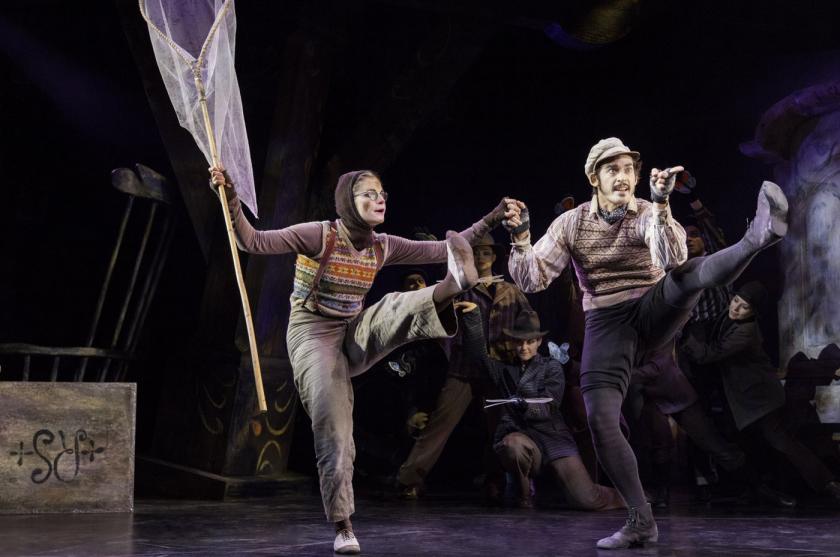The first Royal Opera House production to transfer to the West End stage, and Tony Robinson’s first theatre role in 16 years, is a dance-drama version of a children’s book about animals and features a man in a car costume being chased by comedy coppers during the interval. Dumbing down, do I hear you cry? Not a bit of it.
Personally, I think one of the best things about the Christmas season is the effort made by purveyors of “high” culture to be more accessible to children: see The Nutcracker, Britten’s St Nicolas, Prokofiev's Peter and the Wolf. Like these august efforts, Will Tuckett’s charming production of The Wind in the Willows is far from populist pandering, but rather a pitch-perfect telling of a heart-warming story about friendship and adventure. And the pernicious threat to the English countryside from modernisation, industrialisation and social change, obviously – see also those other classics of early 20th-century children’s literature, The Lord of the Rings, the Narnia books, and T H White’s The Once and Future King – but Tuckett goes reasonably easy on the conservative message (his casting of the naughty, disruptive weasels as gleeful rockers in Elvis wigs makes modernisation and social change look pretty awesome, actually).
 Tony Robinson as Kenneth Grahame narrates the story, and though his long break from theatre work shows in the occasional missed or mumbled word, his kindly, twinkly demeanour is just right; he shows us an author with real affection for his characters, and real joy in the world he conjures up. The other characters are superbly cast: Cris Penfold (pictured right) makes a skittish, Bertie Wooster-ish Toad, Christopher Akrill a grave, down to earth (and Northern) Badger (pictured below), Ewan Wardrop a pricelessly funny Gaoler’s Daughter (who doesn’t love to see a big man in a floral pinny?) as well as a smooth and not-all-that-villainous Chief Weasel. Will Kemp as Ratty reprises a role he created, and I wonder if perhaps he is a little weary of it now; he sparkled less than the others. But Clemmie Sveaas more than compensated with her adorably engaging portrait of Mole, who she makes at once timid and graceful: whether sitting to catch an apple or jumping to catch butterflies, Sveaas has a really captivating quality of movement.
Tony Robinson as Kenneth Grahame narrates the story, and though his long break from theatre work shows in the occasional missed or mumbled word, his kindly, twinkly demeanour is just right; he shows us an author with real affection for his characters, and real joy in the world he conjures up. The other characters are superbly cast: Cris Penfold (pictured right) makes a skittish, Bertie Wooster-ish Toad, Christopher Akrill a grave, down to earth (and Northern) Badger (pictured below), Ewan Wardrop a pricelessly funny Gaoler’s Daughter (who doesn’t love to see a big man in a floral pinny?) as well as a smooth and not-all-that-villainous Chief Weasel. Will Kemp as Ratty reprises a role he created, and I wonder if perhaps he is a little weary of it now; he sparkled less than the others. But Clemmie Sveaas more than compensated with her adorably engaging portrait of Mole, who she makes at once timid and graceful: whether sitting to catch an apple or jumping to catch butterflies, Sveaas has a really captivating quality of movement.
Nicky Gillibrand’s costumes and Jo Tuplin’s wigs and make-up evoke the animals with a light and often humorous touch: chartreuse-green hair for Toad, a shiny Mackintosh and pencil moustache for Ratty, long knitted ears for rabbits (pictured below). The delicacy and cleverness of the costumes astonishes and seduces: Badger’s coat is cut away in just the curve of a real badger’s long back; Mole’s thick round glasses and balaclava precisely evoke the little animal’s head, while her homely, innocent friendliness is conveyed by the best hand-knitted Fair Isle vest this side of BBC2’s Wartime Farm (see main picture).
Composer Martin Ward steeped himself in the music of George Butterworth, most English of composers, in order to create a sound world that evokes all our favourite rural idylls (Hobbiton, Cranford, Farthing Wood). It did seem slightly unnecessary to have the band miked in such a small theatre, particularly since Ward’s restrained orchestration lets the natural tones of his different instruments (just piano, violin, cello, flute, bass clarinet, basson) really sing.
 The ingenious attic set design by the Quay Brothers constantly provokes admiration, with furniture of all kinds being pressed into service as Grahame’s woodland realm: a blue river unfurls from a drawer; an upended chair back provides the bars for a prison cell, and a wooden rocking horse is hitched to a wardrobe (standing in for a caravan) and set merrily rocking by Toad, who is apparently a dangerous driver even of livestock.
The ingenious attic set design by the Quay Brothers constantly provokes admiration, with furniture of all kinds being pressed into service as Grahame’s woodland realm: a blue river unfurls from a drawer; an upended chair back provides the bars for a prison cell, and a wooden rocking horse is hitched to a wardrobe (standing in for a caravan) and set merrily rocking by Toad, who is apparently a dangerous driver even of livestock.
Tuckett’s Wind in the Willows is now 10 years old, and some of the actors have played their woodland characters in dozens of performances over multiple runs, but the delight, the joy, the affection palpable in all aspects of this production appear both fresh and unfeigned. I left not only rejuvenated by a good giggle, but uplifted by good storytelling, the kind that draws you in completely and leaves you feeling – as Robinson says at the end – like “all that makes us us has changed.” That’s exactly what theatre should do, at any age and in any season.
- The Wind in the Willows is at the Duchess Theatre until 1 February 2014.














Add comment